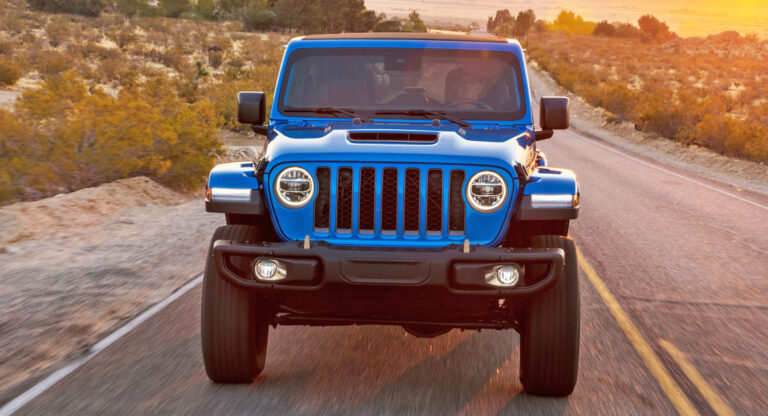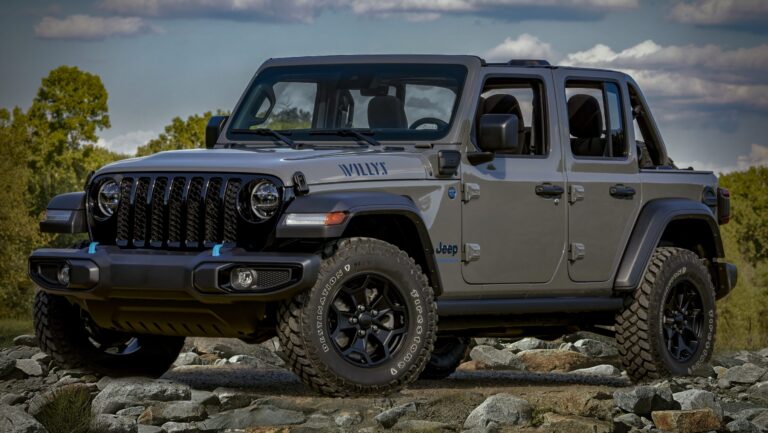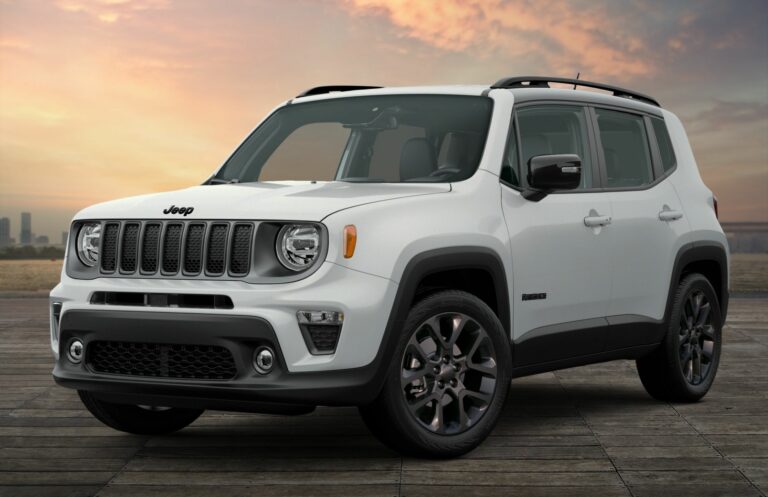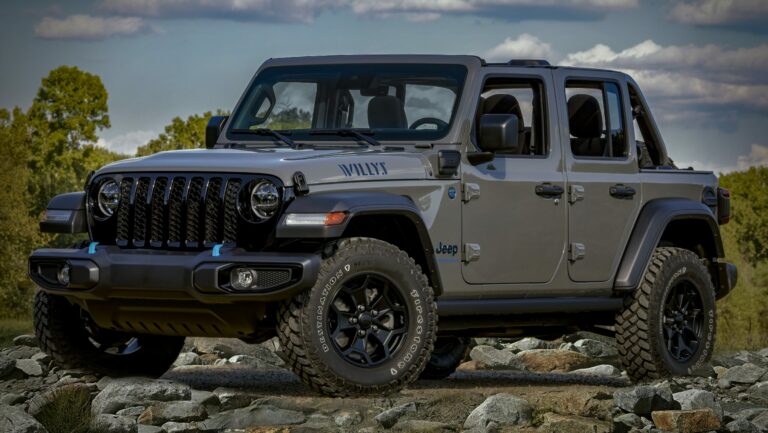2019 Jeep Grand Cherokee Trackhawk Top Speed: Unleashing the Apex Predator of SUVs
2019 Jeep Grand Cherokee Trackhawk Top Speed: Unleashing the Apex Predator of SUVs jeeps.truckstrend.com
In the realm of high-performance vehicles, few can claim to redefine their segment quite like the 2019 Jeep Grand Cherokee Trackhawk. More than just a family hauler with a powerful engine, the Trackhawk is a testament to audacious engineering, blending SUV practicality with supercar-rivalling acceleration and, most notably, an astonishing top speed. This article delves into the intricacies of the 2019 Jeep Grand Cherokee Trackhawk’s top speed, exploring the formidable powertrain, the sophisticated engineering that allows it to achieve such velocities, and what it means for the driver and the automotive landscape. Understanding its top speed isn’t just about a number; it’s about appreciating the culmination of design, power, and safety systems that make this remarkable feat possible in a vehicle of its stature.
The Heart of the Beast: The Supercharged 6.2L HEMI V8
2019 Jeep Grand Cherokee Trackhawk Top Speed: Unleashing the Apex Predator of SUVs
At the core of the 2019 Jeep Grand Cherokee Trackhawk’s extraordinary performance lies the legendary supercharged 6.2-liter HEMI V8 engine, directly borrowed from the Dodge Challenger Hellcat. This monumental powerplant is the primary driver of the Trackhawk’s blistering top speed and breathtaking acceleration.
This isn’t just any V8; it’s an engineering marvel designed for raw, unadulterated power. It churns out a staggering 707 horsepower and 645 lb-ft of torque, figures typically reserved for exotic sports cars, not a full-size SUV. The supercharger, a twin-screw unit, forces air into the engine at an incredible rate, ensuring immediate throttle response and a relentless surge of power throughout the RPM range.
The immense power is managed by a robust eight-speed automatic transmission, specifically calibrated to handle the engine’s prodigious torque and optimize power delivery for both lightning-quick shifts and sustained high-speed runs. Power is sent to all four wheels through a sophisticated Quadra-Trac Active On-Demand 4×4 system, which includes a limited-slip rear differential, ensuring maximum traction during launches and stability at high speeds. It’s this precise combination of a monstrous engine and a meticulously engineered drivetrain that propels the Trackhawk to its impressive top speed of 180 mph (290 km/h), making it one of the fastest SUVs ever produced.
Beyond Horsepower: Aerodynamics and Engineering for High Velocity
Achieving a top speed of 180 mph in a vehicle with the size and weight of an SUV is no small feat. It requires more than just raw power; it demands sophisticated engineering, meticulous aerodynamic design, and a chassis capable of handling extreme forces.
Jeep engineers went to great lengths to ensure the Trackhawk’s stability and safety at high speeds. While its SUV silhouette might not scream "aerodynamic," subtle yet effective design elements contribute to its high-speed prowess. The front fascia, for instance, is not just for aesthetics; it’s designed to optimize airflow, reduce lift, and channel air to cool the engine and brakes. The lowered stance, specific hood vents, and integrated rear spoiler further aid in managing airflow and maintaining downforce.
Underneath the muscular exterior, the chassis is significantly reinforced to handle the immense power and G-forces. The Trackhawk features a high-performance adaptive damping suspension system (Bilstein adaptive shocks), which constantly adjusts to provide optimal ride and handling characteristics, whether cruising or pushing the limits on a track. Larger, high-performance Brembo brakes (15.75-inch front rotors with six-piston calipers) are fitted to ensure that the vehicle can shed speed just as quickly as it gains it, a critical safety feature when operating at such velocities. Special performance-oriented tires (Pirelli Scorpion Verde All-Season or optional P Zero Summer tires) are also crucial, providing the necessary grip and stability. Every component, from the steering system to the cooling capacity, is engineered to sustain the rigors of high-speed performance, making the 2019 Trackhawk a true engineering marvel.
Achieving Max Velocity: Factors Influencing Top Speed

While the 2019 Trackhawk is rated for 180 mph, achieving this maximum velocity in real-world conditions depends on several crucial factors, both external and internal. Understanding these elements is key to appreciating the vehicle’s capabilities and the environment required to safely explore them.
External Factors:
- Road Surface: A smooth, level, and dry surface is paramount. Potholes, undulations, or wet patches can severely compromise stability and tire grip, making high-speed runs dangerous or impossible.
- Weather Conditions: Wind resistance increases exponentially with speed. A strong headwind will significantly reduce achievable top speed, while a tailwind might marginally increase it. Rain, snow, or ice make high-speed driving extremely hazardous due to reduced traction.
- Elevation: Thinner air at higher altitudes reduces engine power output, as there’s less oxygen for combustion. This can slightly lower the ultimate top speed.
- Temperature: Extremely high ambient temperatures can lead to heat soak in the engine and supercharger, reducing efficiency and power. Optimal performance is typically achieved in cooler, denser air.

Internal Factors:
- Tire Condition and Pressure: Properly inflated, healthy tires are critical for stability, grip, and heat dissipation at high speeds. Under-inflated or worn tires are dangerous.
- Vehicle Weight: The vehicle’s total weight, including passengers and cargo, affects acceleration and, to a lesser extent, top speed. Lighter vehicles accelerate faster and generally reach their top speed more easily.
- Maintenance: A well-maintained engine, transmission, and cooling system are essential for optimal performance and reliability during high-stress activities like top-speed runs.
- Fuel Quality: Using the recommended high-octane fuel ensures the engine performs as designed without premature detonation, which can lead to reduced power.

Trackhawk vs. The Competition: A Top Speed Showdown
The 2019 Jeep Grand Cherokee Trackhawk occupies a unique niche, blending SUV utility with supercar performance. Its 180 mph top speed places it in an elite category, challenging not just other SUVs but also some dedicated sports cars.
When compared to its direct SUV rivals from the same era, the Trackhawk often comes out on top or stands shoulder-to-shoulder with the very best:
- Porsche Cayenne Turbo (2019): Top speed around 177 mph (285 km/h).
- Lamborghini Urus (2019): Top speed around 190 mph (305 km/h). The Urus is faster but also significantly more expensive.
- BMW X5 M (2019): Top speed electronically limited to 155 mph (250 km/h), or 177 mph (285 km/h) with the optional M Driver’s Package.
- Mercedes-AMG GLE 63 S (2019): Top speed electronically limited to 155 mph (250 km/h), or 174 mph (280 km/h) with the optional AMG Driver’s Package.
The Trackhawk’s ability to nearly match or exceed many of these premium performance SUVs, often at a significantly lower price point, underscores its incredible value proposition for enthusiasts seeking raw power and speed in an SUV package. It cemented its reputation as a "muscle SUV," bringing a unique American flavor to the global performance SUV market.
Safety at Speed: Important Considerations
While the 2019 Jeep Grand Cherokee Trackhawk is engineered to handle its extreme top speed, it is paramount to understand that such velocities demand immense respect, skill, and the right environment. Public roads are absolutely not the place to attempt top speed runs.
Practical Advice and Actionable Insights:
- Controlled Environments Only: The only safe and legal place to attempt the Trackhawk’s top speed is on a closed course, such as a professional race track with long straights, or a dedicated high-speed testing facility.
- Driver Skill and Training: High-speed driving requires advanced driving skills. If you intend to explore the Trackhawk’s limits, consider enrolling in a performance driving school. Professional instruction can teach you vehicle dynamics, braking techniques, and how to react safely in high-stress situations.
- Pre-Drive Inspection: Before any high-speed attempt, perform a thorough vehicle inspection. Check tire pressure and condition (ensure they are rated for high speeds), fluid levels, brake health, and ensure no warning lights are illuminated.
- Know Your Limits: Understand your own driving capabilities and the vehicle’s limitations. Never push beyond what feels safe or comfortable.
- Vehicle Maintenance: Regular and meticulous maintenance is crucial. The stresses of high-speed driving can expose weaknesses in an unmaintained vehicle. Ensure all service intervals are met and components are in top condition.
Remember, the thrill of speed must always be balanced with an unwavering commitment to safety. The Trackhawk is a powerful tool; wield it responsibly.
Pushing the Limits: Aftermarket Modifications and Top Speed
For some enthusiasts, the factory 180 mph top speed of the 2019 Trackhawk is just a starting point. The aftermarket industry offers a plethora of modifications aimed at increasing power and, consequently, potential top speed. These can range from simple engine tunes (ECU flashes) and pulley upgrades for the supercharger to more extensive modifications like larger superchargers, upgraded fuel systems, improved exhaust systems, and reinforced driveline components.
While these modifications can undoubtedly boost horsepower and potentially push the top speed beyond 180 mph, it’s crucial to understand the implications:
- Increased Stress: More power means increased stress on every component, from the engine internals to the transmission, axles, and tires. Components not designed for higher loads can fail.
- Reliability Concerns: Aftermarket tuning can compromise long-term reliability if not done correctly by reputable professionals.
- Warranty Voidance: Most manufacturers will void the powertrain warranty if significant aftermarket modifications are detected.
- Safety Risks: Altering a vehicle’s performance without also upgrading supporting systems (brakes, suspension, cooling) can create a dangerous imbalance.
- Legality: Modified vehicles may not meet emissions or safety regulations in certain jurisdictions.
For those considering modifications, thorough research, professional installation, and an understanding of the inherent risks are absolutely essential. The factory Trackhawk is a finely tuned machine; significant alterations should be approached with extreme caution and expertise.
Key Specifications and Pricing: 2019 Jeep Grand Cherokee Trackhawk
| Feature | Specification |
|---|---|
| Engine | Supercharged 6.2L HEMI V8 |
| Horsepower | 707 hp @ 6,000 rpm |
| Torque | 645 lb-ft @ 4,800 rpm |
| Transmission | 8-speed automatic (TorqueFlite 8HP95) |
| Drivetrain | Quadra-Trac Active On-Demand 4×4 |
| 0-60 mph (approx.) | 3.5 seconds |
| Quarter Mile (approx.) | 11.6 seconds @ 116 mph |
| Top Speed | 180 mph (290 km/h) |
| Braking System | Brembo high-performance (15.75" front rotors) |
| Curb Weight | Approx. 5,363 lbs (2,433 kg) |
| Fuel Economy (City/Hwy) | 11 MPG City / 17 MPG Hwy (EPA estimates) |
| MSRP (Original 2019) | Starting at approx. $86,900 – $87,650 (excluding destination) |
Note: Prices are approximate original MSRP and can vary based on trim, options, and market conditions.
Frequently Asked Questions (FAQ) about the 2019 Jeep Grand Cherokee Trackhawk Top Speed
Q1: What is the official top speed of the 2019 Jeep Grand Cherokee Trackhawk?
A1: The official top speed of the 2019 Jeep Grand Cherokee Trackhawk is 180 mph (290 km/h).
Q2: How does an SUV achieve such a high top speed?
A2: The Trackhawk achieves its high top speed primarily due to its supercharged 6.2L HEMI V8 engine producing 707 horsepower. This raw power is combined with a robust drivetrain, an optimized aerodynamic profile for an SUV, and a high-performance chassis, suspension, and braking system designed for stability and safety at extreme velocities.
Q3: Is the Trackhawk’s top speed electronically limited?
A3: No, unlike many other performance SUVs that are electronically limited to 155 mph, the 2019 Jeep Grand Cherokee Trackhawk’s top speed of 180 mph is not electronically limited by the manufacturer. It is the maximum speed the vehicle is engineered to achieve under optimal conditions.
Q4: Can I safely test the 180 mph top speed on public roads?
A4: Absolutely not. Attempting the Trackhawk’s top speed on public roads is illegal, extremely dangerous, and irresponsible. High-speed driving should only be conducted on closed courses, professional race tracks, or dedicated testing facilities, under controlled conditions and with proper safety precautions.
Q5: What kind of tires does the Trackhawk use for high speeds?
A5: The 2019 Trackhawk typically comes with high-performance all-season tires (e.g., Pirelli Scorpion Verde All-Season) or optional summer performance tires (e.g., Pirelli P Zero) that are specifically designed to handle the vehicle’s power, weight, and high-speed demands.
Q6: How does the Trackhawk’s top speed compare to other performance SUVs?
A6: The Trackhawk’s 180 mph top speed places it among the fastest SUVs in the world, often matching or exceeding the top speeds of premium European performance SUVs like the Porsche Cayenne Turbo, BMW X5 M (without M Driver’s Package), and Mercedes-AMG GLE 63 S, and only slightly behind ultra-luxury SUVs like the Lamborghini Urus.
Q7: Does modifying the engine affect the Trackhawk’s top speed?
A7: Aftermarket engine modifications can potentially increase horsepower and thus the theoretical top speed. However, such modifications carry significant risks, including compromising reliability, voiding the warranty, and potentially creating an unsafe vehicle if supporting systems (brakes, suspension) are not also upgraded. It is strongly advised to consult professionals and understand the risks involved.
Conclusion
The 2019 Jeep Grand Cherokee Trackhawk stands as a monument to American muscle and engineering prowess, defying conventional expectations of what an SUV can be. Its 180 mph top speed is not merely a number; it is a testament to the colossal power of its supercharged 6.2L HEMI V8, the meticulous design that allows it to slice through the air, and the robust chassis and braking systems that keep it stable and safe. While its top speed is an exhilarating benchmark, the true essence of the Trackhawk lies in its ability to deliver such extraordinary performance in a practical, family-friendly package. For enthusiasts, it represents the pinnacle of SUV performance, a bold statement that combines raw power with everyday usability, forever etching its legacy as an apex predator in the automotive world.







